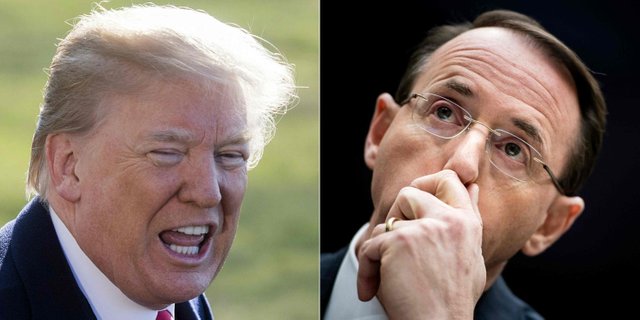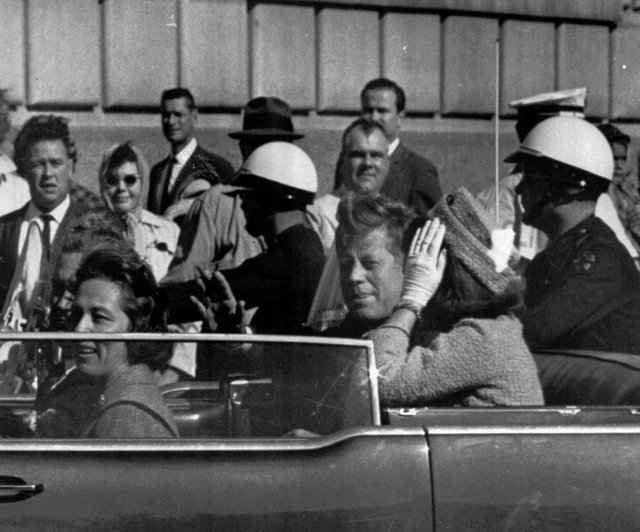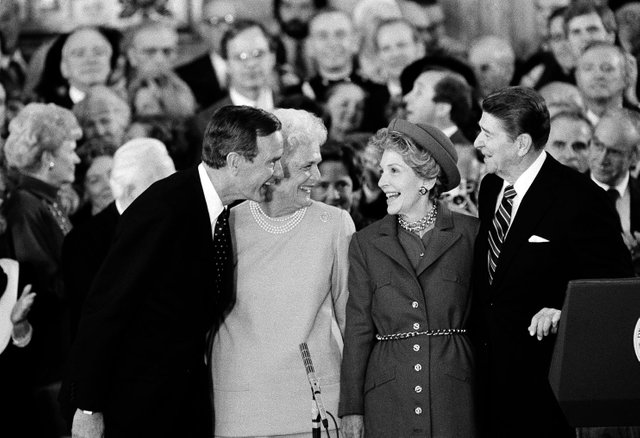The surprising history of the 25th Amendment — and what it can’t do

The 25th Amendment is having its moment.
Added to the Constitution 50 years prior to address the line of progression when a president can't satisfy his obligations, it has created buzz since some consider it to be the crowbar to pry President Trump out of office by discovering him unfit.
It most as of late reemerged Friday when it was accounted for that Deputy Attorney General Rod J. Rosenstein supposedly had considered furtively recording his discussions with President Trump and furthermore talked about potentially endeavoring to expel him from office. The Rosenstein remarks were first revealed by the New York Times. Rosenstein denied the record.
In any case, it's unquestionably not the first occasion when we've heard that Trump organization authorities supposedly pondering summoning the 25th Amendment to expel the president. Prior this month, an opinion piece in the Times by an unknown organization official said there were once whispers among the Cabinet individuals about starting the procedure.
In January, Michael Wolff, writer of "Flame and Fury: Inside the Trump White House," said that while giving an account of the dubious book he would regularly hear West Wing staff members make those references when they were disappointed by the president's conduct.
"This is, I think, not a distortion, and not absurd to state: This is 25th Amendment sort of stuff," Wolff said in a meeting on NBC's "Meet the Press." He said individuals in the West Wing brought it up "constantly."
"They would state ... 'We're not at a 25th Amendment level yet,'" Wolff said. Or then again they would state, "'Okay, this is a little 25th Amendment.' So the 25th Amendment is an idea that is alive consistently in the White House."
The 25th Amendment may really have little to offer to the individuals who think Trump is unfit for office.
It was conceived on Nov. 22, 1963, in Dallas, when President John F. Kennedy was killed. At the time, it was misty whether Vice President Lyndon B. Johnson was likewise injured in the assault.
Who might lead at that point? There was no arrangement.
Prior to Kennedy, distinctive organizations would draft up singular gets ready for progression, on the off chance that something occurred, yet nothing was formalized.

On Jan. 6, 1965, Sen. Birch Bayh (D-Ind.) and Rep. Emanuel Celler (D-N.Y.) introduced joint resolutions to create an amendment laying out a transfer of power. The Bayh-Celler proposals were the foundations for 25th Amendment, which was approved on July 6, 1965, and ratified by the states Feb. 10, 1967.
It was long overdue. The question of presidential succession first came up in 1841, when newly elected President William Henry Harrison became ill and died a month after taking the oath of office.
Congress was flummoxed about how to address Vice President John Tyler, whether he would be an acting president, temporary president, or as some of his detractors in the Whig party suggested, he would simply be called: “His Accidency.”
Tyler, a man of action, quickly got a local judge to administer the presidential oath and put a stop to the uncertainty. End of debate.
Until 1881, when President James A. Garfield was shot and clung to life for 80 days. Vice President Chester A. Arthur, the opposite of Tyler, was too nervous about looking like he was trying to seize power to formally take up his duties.
Oh, and then there was 1919, when President Woodrow Wilson had a stroke and his wife, Edith Wilson, essentially ran the country for the final 18 months of his term.
It was clear after JFK’s death that something was needed in writing. And so the 25th Amendment was adopted, even though it was still a little vague. It gave a vice president a clear path to becoming president in three cases: death, resignation and removal from office.
And it gave that new president the power to name a new vice president. President Richard M. Nixon was the first to use the new amendment, in October 1973, when Vice President Spiro T. Agnew resigned and Nixon named Gerald Ford vice president.
The amendment also allows the president to temporarily sign over his power, as President Ronald Reagan did on July 13, 1985, when he had surgery to remove cancerous polyps from his colon and Vice President George H.W. Bush took over for eight hours.

President George W. Bush handed the reins over to Vice President Richard B. Cheney twice in his term, also when he had colon procedures.
But it is the last part of the amendment that is the trickiest, and the most interesting in today’s conversation.
That allows a vice president, Cabinet or Congress to determine that a president is unfit for office.
“The president may be nutty as a fruitcake and say, ‘Yes, I am able,’ ” one congressman said to the St. Louis Post-Dispatch in a May 17, 1974, story on the amendment, which was being seen an alternative to impeaching Nixon.
But putting that much power in the hands of others is fertile ground for a coup. And that part is probably why the standards for “able” were never clearly drawn.
When Reagan disclosed that he had Alzheimer’s in 1994 — years after he left office — former president Jimmy Carter created a task force to work on establishing what, exactly, the physical and mental requirements for being in office should be.
Neurologist James Toole was head of the Working Group on Presidential Disability in 1994.
“I became interested in this problem in the 1960s, when it came to light that President Franklin D. Roosevelt, in addition to being physically exhausted, might also have had vascular dementia caused by uncontrolled hypertension and congestive heart failure when he and British Prime Minister Winston Churchill negotiated with Joseph Stalin at Yalta near the end of World War II,” Toole wrote.
“Subsequent revelations by Churchill’s physician, Lord Moran, suggest that Churchill also suffered from increasing dementia during this critical period. Few now dispute that Roosevelt and Churchill were out-negotiated by Stalin, with resulting arbitrary divisions of Poland, Germany, Vietnam, and Korea that sowed the seeds of subsequent hot and cold wars.”
Toole argued that presidential candidates “need physicals,” particularly mental-health examinations, to hold them accountable to voters. At least 10 sitting presidents suffered from some mental disorder while in office, according to a 2006 study in the Journal of Nervous and Mental Disease.
But the amendment does not offer a way to figure out when there is an FDR-style situation, Toole wrote. Instead it enables “a cognitively impaired President who lacked insight into his mental deficiency to obstruct governmental procedures for removal from office (or to resume office), despite persistent deficits. Only a specially trained physician has the skills to determine the presence, treatment, and prognosis for neurologic and psychiatric disease.”
He and other scientists advocated for an independent, medical panel established to determine the physical and mental health of each president. Toole now has dementia himself, and his son, Bill Toole, speaks for him.
“I went through all these sessions; these were the most thoughtful people. Historians, experts, three different sessions over the course of time,” Bill Toole said in an interview.
But others argued that a totally neutral panel of medical experts would be tough to find. Doctors can be partisan, too, Toole said.
“Ultimately,” he said, “there was no clear solution to this.”
Congratulations @musaddik! You have completed the following achievement on the Steem blockchain and have been rewarded with new badge(s) :
Click on the badge to view your Board of Honor.
If you no longer want to receive notifications, reply to this comment with the word
STOP